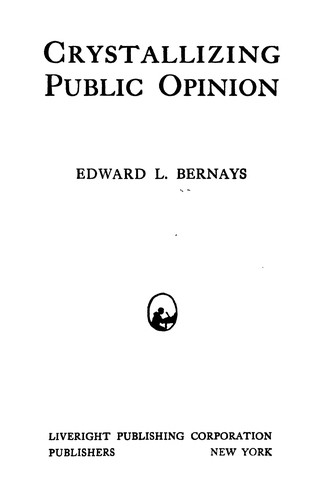
Crystallizing Public Opinion
References and Quotes
Crystallizing Public Opinion and Propaganda had much to say to the newly minted administrative classes burgeoning all over American schools and colleges. In Propaganda, Bernays redefined democratic society, in the interests of the mass-production economy. I’ve selected three short excerpts from Bernays’ classic which enriched him with corporate work in the seven decades of life he had left—he died in 1995 at the age of 105—after its publication.
Bernays was only a solitary word magician at the time, of course, but he was in an ideal position to capitalize quickly upon his rhetorical talent and to set his stamp on the new science’s future. In 1928, Bernays published two books in quick succession which planted his flag in the dream terrain of the "unconscious." The first, Crystallizing Public Opinion, and the second,Propaganda. Adolf Hitler is said to have displayed both on a table in his office under a poster-sized picture of Henry Ford.1 The new world was blazing a trail into an even newer world than it imagined. Both of Bernays’ books argued that language could be used successfully to create new realities. Psychological science was so advanced, he claimed, it could substitute synthetic reality for natural reality, as urban society had successfully replaced our natural connection to birds, trees, and flowers with a substitute connection to billboards, cars, and bright lights.
In 1928, Edward L. Bernays, godfather of the new craft of spin control we call "public relations," told the readers of his book Crystallizing Public Opinion that "invisible power" was now in control of every aspect of American life. Democracy, said Bernays, was only a front for skillful wire-pulling. The necessary know-how to pull these crucial wires was available for sale to businessmen and policy people. Public imagination was controlled by shaping the minds of schoolchildren.